In the pulley system shown in the figure, the mass of A is half of that of rod B. The rod length is 500 cm. The mass of pulleys and the threads may be neglected The mass A is set at the same level as the lower end of the rod and then released After releasing the mass A, it would reach the top end of the rod B in time (Assume, )
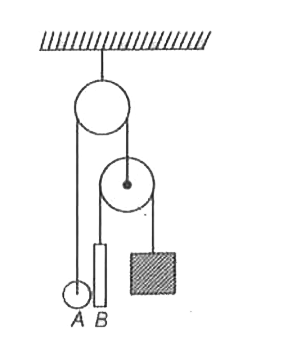 Solution in Telugu
Solution in Telugu
2.0 s
1.0 s
3.0 s
4.0 s
The correct Answer is:B
According to the question,

Given, mass of body A. is half of mass of rod B.
l.e.
and length of rod = 500 cm = 5m
Since, rod B and body C is in equilibrium, hence mass of rod B= mass of rod C
i.e.,
By applying Newton's law of motion,
or
or
Adding Eqs. (i) and (ii), we get
If t be the time to cross the rod of length
500 cm = 5 m
From eqs.,
Topper's Solved these Questions
Similar Questions
Which of the following represents fundamental forces of nature ?
08:56View SolutionMatch the following table.
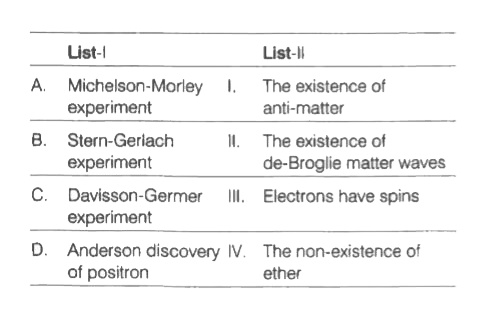 04:48View Solution
04:48View SolutionIn the arrangement shown in figure the mass of the ball is η times as that of the rod. The length of the rod is L the masses of the pulleys and the threats as well as the friction, are negligible. The ball is set on the same level as the lower and of the rod and then released. How soon will the ball be opposite the upper and of the rod?
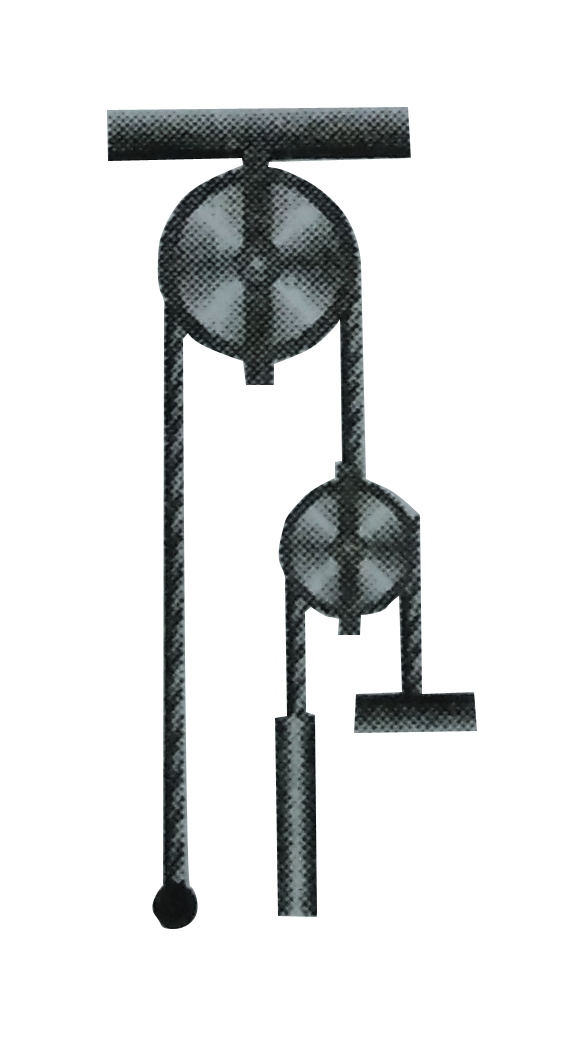 View Solution
View Solutionif a mass of ball is m/2 and that of a rod is m the length of the rod is 20 cm the ball is set on the same level as the lower end of the rod and then released. If pulleys and strings are light, friction negligible how soon will the ball be opposite top the upper end of the rod?
01:20View Solution(a) In the system shown in figure 1, the uniform rod of length L and mass m is free to rotate in vertical plane about point O. The string an pulley are mass less. The block has mass equal to that of the rod. Find the acceleration of the block immediately after the system is released with rod in horizontal position. (b) System shown in figure 2 is similar to that in figure 1 apart from the fact that rod is mass less and a block of mass m is attached to the centre of the rod with the help of a thread. Find the acceleration of both the blocks immediately after the system is released with rod in horizontal position.
View SolutionTwo equal rods joined at one end are kept on a smooth surface as shown and released Trajectory of centre of mass of both rods is :−
 View Solution
View SolutionUniform rod Ab is hinged at the end A in the figure. The other end of the rod is connected toa block through a massless string as shown. The pulley is smooth and massless. Masses of the block and the rod are same and are equal to 'm'. Acceleration due to gravity is g. The tension in the thread and angular acceleration of the rod just after releases of block from this position are
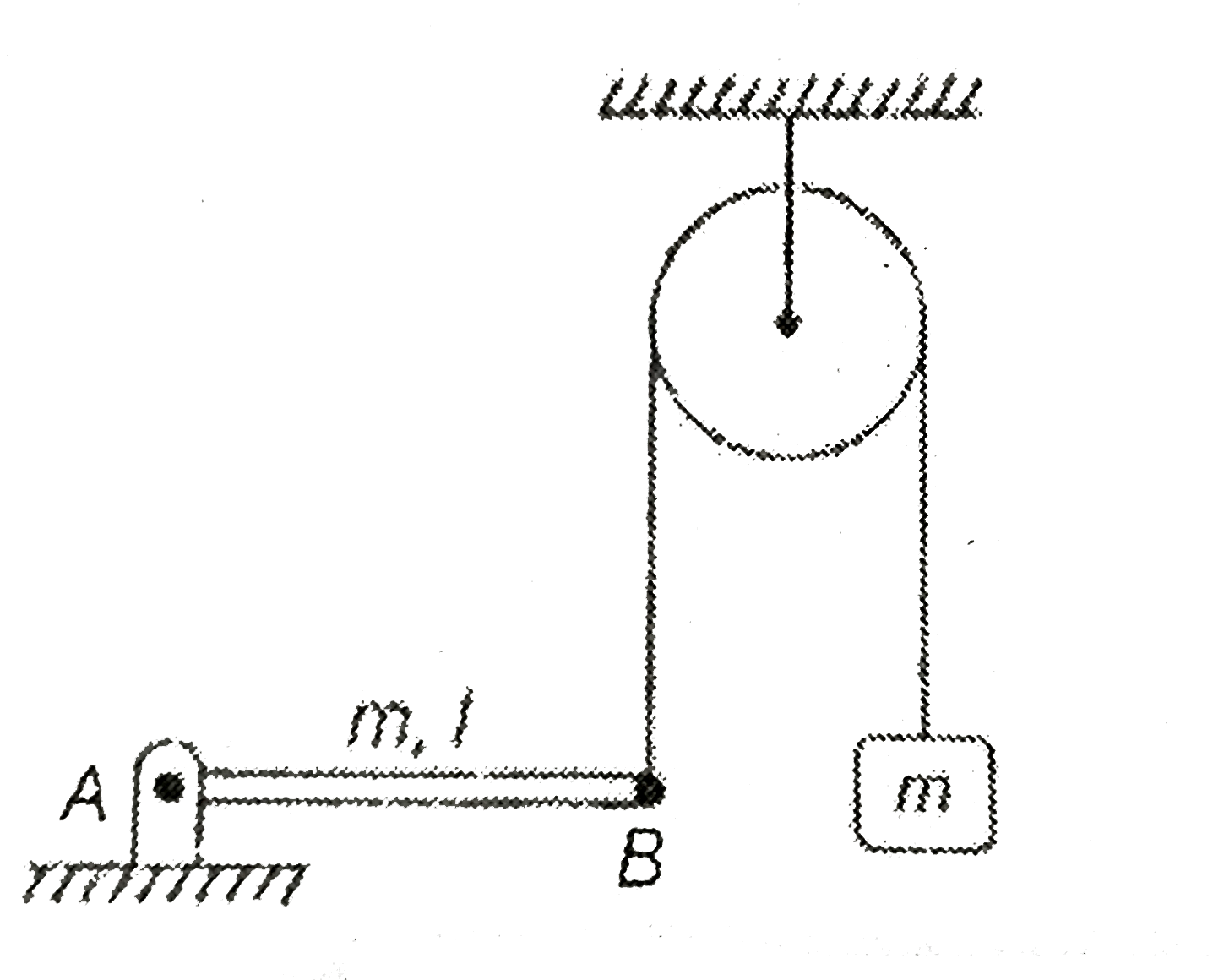 07:22View Solution
07:22View SolutionConsider the situation shown in the figure. Uniform rod of length L can rotat freely about the hinge A in vertical plane. Pulleys and stringa are light and frictionless. If the rod remains horizontal at rest when the system is released then the mass of the rod is
View SolutionIn the figure , mass of a ball is 9/5 times mass of the rod, Length of rod is 1m.The level of ball is same as rod level.Find out time taken by the ball to reach at upper end of rod.
03:26View SolutionIn the arrangement shown in fig the mass of the ball 1 is eta=1.8 times as great as that of rod 2 The length of the later is l=100 cm The masses of the pulleys and the threads as well as the friction are negligible The ball is set on the same level as the lower end of the rod and then released How soon will the ball be opposite to the other end of the rod
03:26View SolutionA rod AB of mass M and length L is shown in figure. End A of rod is hinged and end B is lying on the ground. Find the Normal reaction by ground on the rod
View SolutionA rod and a block are of same mass. Initially rod is in horizontal position. What will be acceleration of tip of the rod just after the system is released from this position shown in figure.
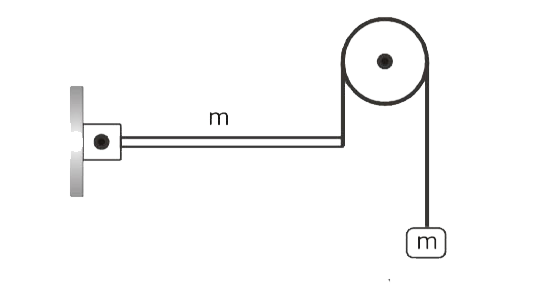 View Solution
View SolutionIn the arrangement shown in figure, the mass of ball 1 is (n = 1.8) times larger than that of rod 2. The length of rod is l = 1m. The ball is set on the same level as the lower end of the rod and then released, find the time taken by the ball to reach at the level of the upper end of the rod. The masses of pulleys, threads and the friction may be neglected.
View SolutionIn the arrangement shown in figure, the mass of ball 1 is (n = 1.8) times larger than that of rod 2. The length of rod is l = 1m. The ball is set on the same level as the lower end of the rod and then released, find the time taken by the ball to reach at the level of the upper end of the rod. The masses of pulleys, threads and the friction may be neglected.
08:30View SolutionIn the arrangement shown in figure , the mass of ball 1 is (n=1.8) times larger than that of rod 2 . Thelength of rod is 1=1m . The ball is set on the same level as the lower end of the rod and then released , find the time taken by the ball to reache at the level of the upper end of the rod. The masses of pulleys , threads and the friction may be neglected .
08:36View Solution

